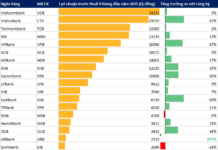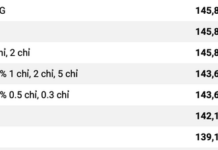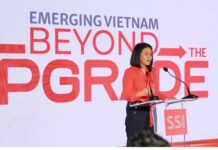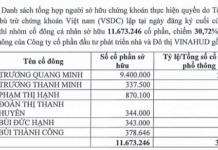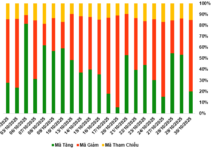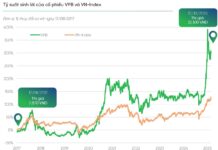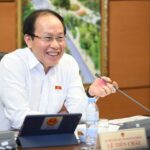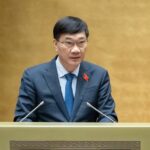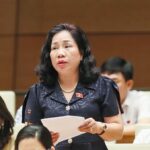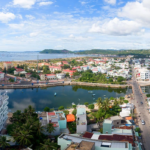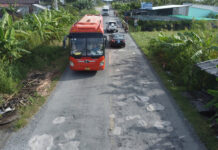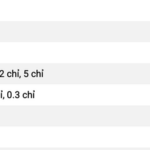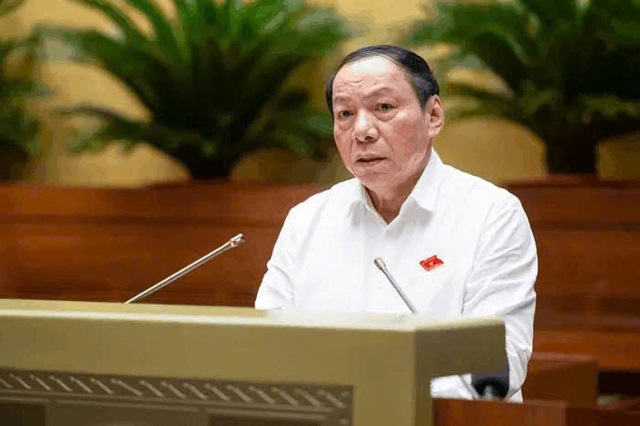
Minister of Culture, Sports, and Tourism Nguyen Van Hung presents the proposal for the investment policy on the National Target Program on Cultural Development for the 2025-2035 period
|
On November 1st, the National Assembly continued its 8th session with a discussion in the hall about the investment policy on the National Target Program on Cultural Development for the 2025-2035 period. On behalf of the Prime Minister, Minister of Culture, Sports, and Tourism Nguyen Van Hung presented the proposal for the investment policy on the National Target Program on Cultural Development for the 2025-2035 period.
Aiming for the cultural industries to contribute 7% of GDP by 2030
Minister Nguyen Van Hung stated that the National Target Program on Cultural Development for the 2025-2035 period aims for comprehensive and drastic changes in cultural development and the formation and perfection of the character, moral standards, identity, strength, and value system of Vietnamese individuals and families. It also aims to enhance the spiritual life, access to, and enjoyment of culture, as well as the need for exercise and entertainment of the people, narrowing the gap in cultural enjoyment between regions, social classes, and genders, thereby increasing labor productivity and work efficiency.
Mobilizing resources and focusing on investing in a concentrated, qualitative, and effective manner in cultural development, directly contributing to socio-economic development, and promoting cultural industries to become an important part of the national economy. Integrating internationally and absorbing the quintessence of world culture, building an advanced culture with a strong national identity, and promoting the soft power of Vietnamese culture…
The Program will be implemented throughout the country and in some countries with long-standing cultural relations and interactions with Vietnam, with a large number of Vietnamese people living, working, and studying. Priority will be given to the Program’s resources to invest in key tasks and targets that have been identified.
The Program sets the goal that by 2030, the value system of culture, individuals, and families of Vietnam will be implemented throughout the country through codes of conduct. It aims for 100% of provincial-level administrative units to have three types of cultural institutions (Culture Center or Culture-Sports Center, Museum, Library), 80% of district-level administrative units to have standard Culture-Sports Centers, ensuring the effective operation of grassroots-level cultural institutions at the communal and village levels. The Program also aims to restore and upgrade 95% of special national relics (equivalent to approximately 127 relics) and 70% of national relics (equivalent to approximately 2,542 relics), striving for the cultural industries to contribute 7% of the country’s GDP…
By 2035, it is expected that the cultural industries will contribute 8% to the country’s GDP. The Program also aims to complete the National Digital Library, build smart libraries, and expand connections and data integration with libraries in the Vietnamese and international library networks…
According to Minister Nguyen Van Hung, the total resources mobilized to implement the Program in the 2025-2030 period are expected to be VND 122,250 billion. Of this, the central budget will directly support a minimum of VND 77,000 billion (63%) for the implementation of the Program in the 2025-2030 period. The local budget is expected to contribute VND 30,250 billion (24.6%), and other legal capital mobilization is expected to be VND 15,000 billion (12.4%).
For the 2031-2035 period, the total resources mobilized to implement the Program are expected to be VND 134,000 billion.
Clearly defining priorities and tasks
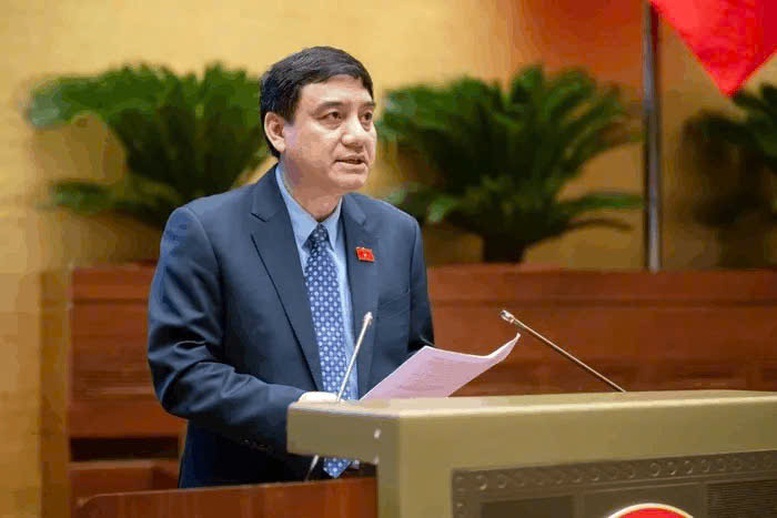 Chairman of the Culture, Education, and Youth Committee of the National Assembly Nguyen Dac Vinh presents the verification report
|
Presenting the verification report, Mr. Nguyen Dac Vinh, Chairman of the Culture, Education, and Youth Committee of the National Assembly, stated that the Committee agreed with the necessity of the investment policy on the Program and believed that the development of the Program at this time fully met the political, legal, scientific, and practical bases. The Program’s dossier has also met the requirements specified by law.
The Committee basically agreed with the Government’s proposed objectives, time frame, and scope of the Program. However, some opinions suggested reviewing and modifying some of the Program’s objectives and tasks, including clearly defining priorities and tasks to ensure that the allocation of the Program’s resources is focused, creating breakthroughs in cultural development, and paying attention to investing in culture at the grassroots level to better meet the people’s needs. This will ensure that culture truly becomes an endogenous strength and driving force for the country’s development…
Regarding the total investment, the Committee basically agreed with the expected total investment and sources of capital for the Program. Adequate resource allocation is necessary to effectively realize the Party’s views and policies on cultural development.
However, some opinions stated that the total investment of the Program is very large, and it is necessary to carefully study, evaluate, and ensure the feasibility of the Program’s scale, structure, and ability to mobilize and allocate resources, in alignment with the country’s resource capacity and efficient use of the budget.
In addition, the Committee agreed with the explanation regarding local budget capital and requested that during the process of constructing the feasibility report, the Government should stipulate principles, criteria, and allocation norms for central budget capital and local budget matching rates suitable to the budget balance and resource capacity of each locality, considering prioritizing localities in remote, disadvantaged, and difficult socio-economic conditions.
Furthermore, the Committee agreed with the proposal to invest in and build Vietnamese Cultural Centers abroad, as this is in line with the Party and State’s guidelines and policies. They also agreed to include this content in the draft resolution to ensure a legal basis (a special mechanism for implementation that differs from the regulations of the Law on Public Investment).
However, some opinions suggested that the Government carefully consider the policy of investing in the construction of Vietnamese Cultural Centers in foreign countries, ensuring feasibility, effectiveness, avoiding waste, and aligning with available resources.
Regarding the Program’s management and implementation mechanism, the Committee acknowledged that the Government has received and improved the Program’s management and implementation mechanism, narrowing the management scope and issuing appropriate legal documents to guide the implementation of the Program.
Streamlining Urban Subdivision Planning: Expediting the Process
The draft Law on Urban and Rural Planning has been revised with a new provision that reduces the maximum time for completing the formulation and approval of detailed urban planning schemes, from 12 months to 6 months, after the approval of the general urban plan.
The Unassuming Province Transformed: A New 500-Square-Kilometer City for the Rising Star Tourism Destination
The city is strategically located in the economic development zone of the central coastal provinces, boasting a well-developed transportation system. With its proximity to sea ports, airports, and neighboring economic zones, it serves as a thriving hub for business and trade.






